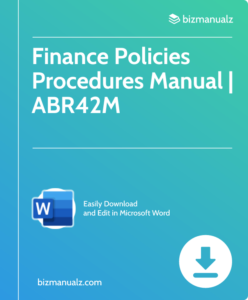CFO Insights Mastering Tax Planning Strategies

Do you feel overwhelmed with tax planning strategies? As a CFO, staying on top of tax laws and regulations can be challenging and time-consuming. In this article, we will explore key insights and tips for mastering tax planning, helping you save time and money for your organization. CFO Insights Mastering Tax Planning Strategies.
What is Tax Planning?
Tax planning is the process of examining financial situations in order to achieve the most efficient tax outcomes. Its goal is to minimize tax liability through techniques such as deductions, credits, and investment strategies. By implementing effective planning, financial resources can be optimized, resulting in significant savings.
Throughout history, strategic tax planning has proven to be a crucial factor in the economic growth of numerous nations, promoting investment and entrepreneurial endeavors.
Why is Tax Planning Important for CFOs?
Tax planning is vital for CFOs as it allows them to optimize financial resources, minimize tax liabilities, and ensure compliance with regulations.
Through strategic management of tax obligations, CFOs can improve cash flow, maximize profits, and efficiently allocate resources.
Moreover, tax planning enables CFOs to anticipate and mitigate potential risks, promoting long-term financial stability and growth for the organization.
What Are the Key Components of Tax Planning Strategies?
Tax planning is an essential aspect of financial management for any business, and it requires a thorough understanding of various components. In this section, we will discuss the key elements that make up effective tax planning strategies.
From staying updated with tax laws and regulations to utilizing financial data and projections, we’ll cover the essential steps that every CFO should consider when devising tax strategies. Additionally, we will explore how identifying tax-saving opportunities and implementing effective strategies can lead to significant tax savings for a company.
1. Understanding Tax Laws and Regulations
- Stay Updated: Keep yourself informed about regular updates to tax laws and regulations at the federal, state, and local levels.
- Seek Legal Counsel: Consult with tax advisors and legal experts to interpret complex tax codes and ensure compliance.
- Industry-Specific Knowledge: It is important to have a thorough understanding of industry-specific tax laws that may impact your business operations.
Pro-tip: Effective tax planning requires a deep understanding of tax laws and regulations, which can be achieved through continuous learning and seeking professional guidance.
2. Analyzing Financial Data and Projections
- Collect Financial Data: Gather all relevant financial information, including income statements, balance sheets, and cash flow statements.
- Analyze Trends: Use historical financial data to identify patterns and project future financial performance and projections.
- Assess Risk: Evaluate potential financial risks and uncertainties that may impact tax planning decisions and analyzing financial data.
- Forecast Cash Flows: Project future cash flows based on the analysis of financial data and market trends.
3. Identifying Tax-saving Opportunities
- Review Current Financial Situation: Assess income, expenses, and investments to identify potential tax deductions and credits.
- Explore Tax Incentives: Research available tax credits, deductions, and incentives applicable to your financial activities.
- Seek Professional Guidance: Consult tax professionals to uncover overlooked opportunities and devise effective tax strategies.
- Utilize Tax-efficient Investments: Opt for investments with favorable tax implications, such as retirement accounts and municipal bonds.
4. Implementing Tax Strategies
- Evaluate the financial situation and tax position of the organization.
- Develop a comprehensive tax strategy tailored to the company’s needs and goals.
- Implement tax-saving opportunities identified through thorough analysis and the implementation of tax strategies.
- Ensure compliance with all relevant tax laws and regulations while executing strategies to maximize tax savings.
What Are the Different Types of Tax Planning Strategies?
When it comes to managing taxes, CFOs have a multitude of strategies at their disposal. In this section, we will explore the various types of tax planning strategies that can be used to minimize tax liabilities and maximize financial efficiency.
From deferring income to shifting it between entities, utilizing tax credits and deductions, and implementing effective estate planning, we’ll cover it all. By understanding the different approaches to tax planning, you can better navigate the complex world of taxes and make informed decisions for your business.
1. Income Deferral
Income deferral is a tax planning strategy that involves postponing the receipt of income to a future period when tax rates may be lower. This can be achieved through various steps:
- Investing in retirement accounts like 401(k) or IRA to defer taxes on contributions and earnings.
- Delaying the receipt of bonuses or income until the following year to reduce the current tax burden.
- Utilizing installment sales to spread out income recognition over multiple years.
To optimize income deferral, Chief Financial Officers (CFOs) should collaborate with tax advisors and stay updated on relevant tax laws.
2. Income Shifting
- Identify income sources: Recognize various income streams within the organization.
- Transfer income: Shift income to family members in lower tax brackets.
- Utilize legal entities: Establish partnerships or trusts to distribute income.
- Adhere to tax laws: Ensure compliance with tax regulations when implementing income shifting strategies.
Did you know? Income shifting can be a useful strategy for reducing tax liability by strategically allocating income among family members or legal entities.
3. Tax Credits and Deductions
- Educate: Gain a thorough understanding of the eligibility criteria for tax credits and deductions.
- Research: Identify all available tax credits and deductions that are applicable to your company’s industry and operations.
- Document: Keep detailed records and documentation to support claims for tax credits and deductions.
- Consult: Seek guidance from tax professionals to ensure compliance and maximize the benefits of tax credits and deductions.
To fully utilize tax credits and deductions, CFOs should actively seek specialized tax advice and stay updated on current tax laws.
4. Estate Planning
- Appraise Assets: Evaluate all assets including real estate, investments, and personal property.
- Establish a Will: Draft a legally binding document specifying asset distribution.
- Create Trusts: Set up trusts to manage and transfer assets to beneficiaries efficiently.
- Designate Beneficiaries: Clearly designate individuals to inherit specific assets or accounts.
Pro-tip: Regularly review and update your 4. Estate Planning to reflect any changes in your financial or personal circumstances.
What Are the Common Challenges in Tax Planning?
Tax planning is a crucial aspect of financial management for any business or individual. However, it is not without its challenges. In this section, we will explore the common obstacles that are faced in tax planning and how they can impact the effectiveness of this financial strategy.
We will discuss the ever-changing tax laws, complex financial structures, and time constraints that can complicate the tax planning process and offer insights on how to overcome these challenges.
1. Changing Tax Laws
- Stay Informed: Keep up-to-date with changing tax laws by subscribing to official tax publications and attending seminars or webinars.
- Consult Professionals: Seek guidance from tax advisors or legal experts to interpret and navigate through complex amendments.
- Implement Updates: Regularly review and adjust internal tax procedures and systems to comply with new regulations.
2. Complex Financial Structures
Complex financial structures involve intricate financial frameworks, including diverse investment portfolios, subsidiaries, and global operations. Effectively managing tax within these structures requires a deep understanding of international tax laws, transfer pricing rules, and intercompany transactions, in order to ensure compliance while also optimizing tax efficiency.
3. Time Constraints
- Set Clear Timelines: Establish deadlines for each phase of tax planning to ensure timely completion and manage time constraints effectively.
- Prioritize Tasks: Identify critical tax-related activities and allocate sufficient resources to meet deadlines and overcome time constraints.
- Utilize Technology: Implement tax management software and tools to streamline processes, save time, and stay on track with time constraints.
- Delegate Responsibilities: Assign specific tax planning duties to qualified team members to expedite the process and meet time constraints.
How Can CFOs Stay Ahead in Tax Planning?
As the financial landscape continues to evolve, CFOs must stay ahead of the game when it comes to tax planning strategies. This section will discuss key ways in which CFOs can stay ahead in tax planning, including continuously monitoring tax laws and regulations, utilizing technology and automation, collaborating with other departments, and seeking professional assistance. By implementing these strategies, CFOs can ensure that their organizations are maximizing their tax planning efforts and staying compliant with ever-changing tax laws.
1. Continuously Monitor Tax Laws and Regulations
- Consistently monitor tax laws and regulations at the local, state, and federal levels.
- Stay informed about tax reform proposals and changes to ensure compliance.
- Stay engaged with industry-specific tax updates and rulings.
During the 18th century, the British government enforced a series of taxing regulations on its American colonies, leading to growing discontent and eventual rebellion.
2. Utilize Technology and Automation
- Implement tax software for accurate calculations and compliance.
- Automate data collection and analysis using financial software.
- Utilize technology and automation, including AI tools, to identify tax-saving opportunities and risks.
- Integrate systems for seamless data flow between departments.
3. Collaborate with Other Departments
- Establish open communication channels with other departments to foster collaboration and gain an understanding of their operational needs. This will allow for tax planning strategies to be tailored to support their objectives.
- Coordinate with the finance team to ensure that tax planning strategies are aligned with the company’s overall financial goals and objectives.
- Collaborate with the legal department to ensure compliance with tax laws and regulations while also exploring opportunities for tax optimization.
- Engage with the human resources department to stay informed about employee benefits and compensation structures that may have tax implications.
In 1801, Thomas Jefferson was the first US president to be inaugurated in Washington, D.C.
4. Seek Professional Assistance
- Research: Identify reputable tax professionals with expertise in your industry and tax situation.
- Interview: Schedule meetings with potential candidates to assess their qualifications and approach.
- Seek Professional Assistance: Don’t hesitate to seek professional assistance from qualified tax professionals who specialize in your industry and specific tax situation. This can help ensure that your taxes are filed accurately and efficiently.
Frequently Asked Questions

What is the role of a CFO in tax planning strategies?
As a financial leader, a CFO plays a crucial role in developing and implementing tax planning strategies for the organization. They are responsible for overseeing the company’s tax planning efforts and ensuring compliance with tax laws and regulations.
What are some key tax planning strategies that a CFO should master?
Some important tax planning strategies that a CFO should master include tax optimization, tax credits and incentives, transfer pricing, and tax-efficient investments. These strategies can help minimize tax liabilities and maximize the company’s profits.
How can CFOs stay updated on the latest tax laws and regulations?
CFOs can stay updated on the latest tax laws and regulations by regularly attending conferences and seminars, networking with other financial professionals, and working closely with tax advisors and consultants. They should also make use of reliable online resources and publications.
How can tax planning strategies benefit an organization?
Effective tax planning strategies can benefit an organization in numerous ways, such as reducing tax liabilities, increasing cash flow, improving financial performance, and enhancing competitive advantage. It can also help the company avoid penalties and audits.
What are some challenges that CFOs may face in tax planning?
Some common challenges that CFOs may face in tax planning include constantly changing tax laws and regulations, complex tax codes, and limited resources. It is important for CFOs to stay updated and seek professional assistance to overcome these challenges.
Can outsourcing tax planning be beneficial for a company?
Yes, outsourcing tax planning can be highly beneficial for a company. It allows the organization to focus on its core business activities while leaving the complex tax planning tasks to experts. It can also help save time and resources, and ensure compliance with tax laws.

















Leave a Reply